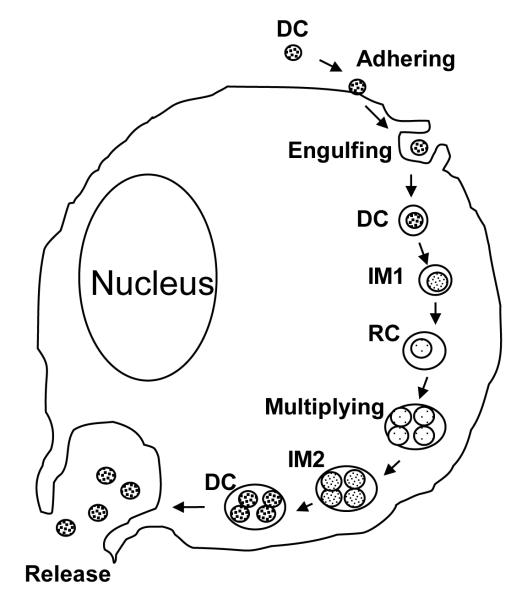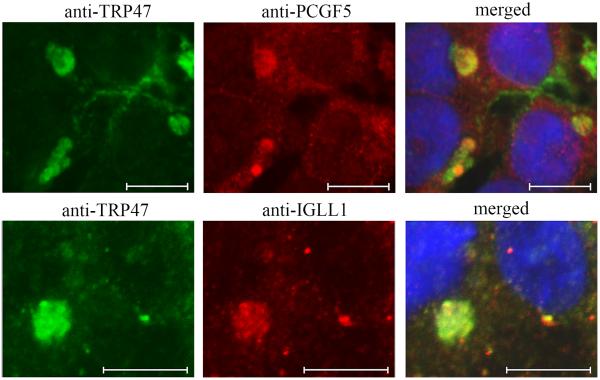Figure 2.
Developmental cycle of E. chaffeensis in the eukaryotic host cell (Reproduced with permission from the John Wiley and Sons, license 2546680582714). Infectious dense cored (DC) ehrlichiae attaches and enters the host cell thorough receptor mediated endocytosis and within 1 hr after entry transforms into the intermediate (IM)-1 then into the reticulate cell (RC). During the next 48 hrs RC replicates, doubling every 8 hrs, and then transforms into IM-2 and matures to DC within 72 hr after initial cell contact (Refs. 13). Dense-cored ehrlichiae obtained 72 hrs post-infection exhibited much higher infectivity than E. chaffeensis RC obtained 24 hr post infection. RC and DC can be distinguished by two differentially expressed tandem repeat proteins, TRP47 and TRP120 that are found only on DC ehrlichiae, and the major outer membrane protein p28-19, which is only expressed on RC (Refs. 13). However, intermediate, presumably transitional, forms that co-express these proteins have also been described (Refs. 13). Although ehrlichiae and chlamydiae have similar morphologic forms and developmental cycles, homologous genes for the histone H1 homolog proteins (Hc1 and Hc2) involved in condensation and decondensation of the chlamydial nucleoid are not present in the E. chaffeensis genome (Refs. 13).


